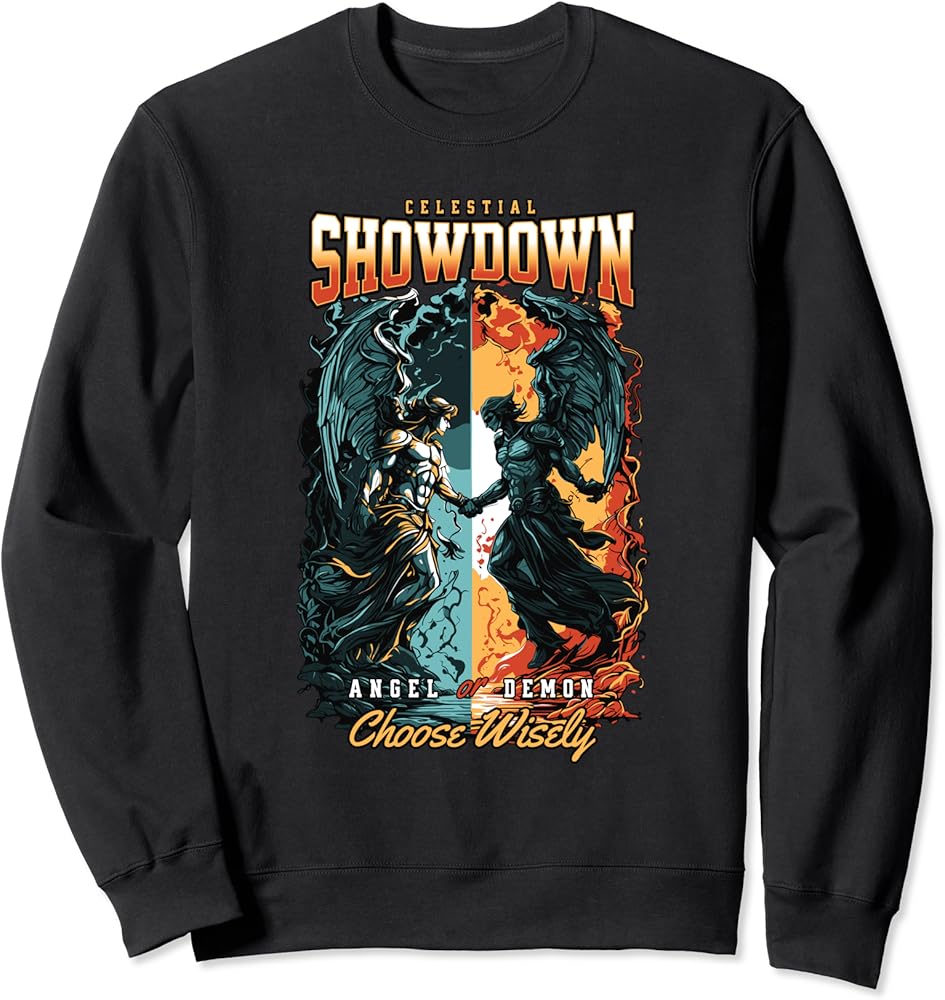The article explores the mythological conflict between angels and demons, which symbolizes the eternal struggle between good and evil. Angels, seen as divine messengers and protectors primarily in Abrahamic religions, embody benevolence and order. In contrast, demons represent chaos and temptation, often portrayed as corruptors of human morality. This dichotomy has been reflected in literature, art, and modern media, illustrating complex narratives of light and darkness. The story of angels and demons serves as a metaphor for human duality, moral choices, and societal reflections, prompting ongoing dialogue about the complexities of existence and self-understanding.
Mythological Showdown: Angels vs. Demons
Introduction
The eternal clash between angels and demons has captivated human imagination for centuries, morphing through cultures and transcending religions. These celestial beings—angels, often regarded as messengers and protectors, stand in stark contrast to demons, synonymous with chaos and temptation. This article delves deep into the lore surrounding these two forces, exploring their origins, characteristics, symbolism, and the profound moral implications they present in various mythologies.
The Origins of Angels and Demons
Angels: Heralds of Light
Angels are predominantly seen as benevolent beings tasked with delivering messages from the divine. Their origins can be traced back to ancient religious texts, most notably the Abrahamic faiths. In Christianity, Judaism, and Islam, angels serve God, maintaining the order of the universe and assisting humans in times of need.
Key Characteristics:
-
Divine Messengers: Angels are often depicted as intermediaries between God and humanity. Gabriel, for instance, is known for announcing the birth of Jesus, while Michael is seen as a protector in the battle against evil.
- Guardians and Protectors: Many cultures believe in guardian angels—spiritual beings assigned to protect individuals throughout their lives. This idea reflects society’s innate desire for safety in the face of adversity.
Demons: Heralds of Chaos
Conversely, demons, rooted in a wider array of mythologies, represent malevolence, chaos, and temptation. Their origins vary, with some traditions depicting demons as fallen angels, while others present them as distinct entities born from darkness and evil itself.
Key Characteristics:
-
Tempters and Corruptors: Demons are often portrayed as seducers, luring humans into sin. They exploit weaknesses and desires, leading individuals down paths of moral decay.
- Spirits of Destruction: In literature and folklore, demons frequently emerge as agents of chaos, instigating war, pestilence, and despair. Their primary goal is often seen as the disruption of divine order established by angels.
Symbolism and Cultural Representations
In Literature and Art
Both angels and demons have been immortalized in various forms of art and literature. The juxtaposition of light and dark creates a robust narrative device that resonates through the ages.
-
Literature: Classic works like John Milton’s Paradise Lost confront the reader with the complexity of angelic and demonic figures. Milton portrays Satan not merely as the embodiment of evil but as a tragic figure, challenging the very nature of divine order.
- Art: The Renaissance witnessed the emergence of striking visual representations of these beings. Artists such as Michelangelo and Raphael captured the beauty of angels, while artists like Hieronymus Bosch conveyed the nightmarish imagery of demons, often in unsettling detail.
In Modern Media
The modern era has seen a resurgence of interest in the angel-demon dichotomy, showcased in films, television series, and video games. This cultural fascination often explores the grey areas between good and evil, illustrating the struggles of characters torn between angelic and demonic influences.
-
Television: Series like Supernatural and Lucifer delve into the lives of these beings, granting them human-like qualities and dilemmas, effectively blurring the lines between the two factions.
- Video Games: Titles like Dante’s Inferno and Bayonetta center around the mythological battles between angels and demons, allowing players to experience the tension of this age-old conflict through interactive gameplay.
The Moral Implications of Angels and Demons
Duality of Human Nature
The dichotomy of angels and demons serves as a powerful metaphor for the duality of human nature. Each person possesses the capacity for both good and evil, and this internal struggle is a central theme in numerous mythologies.
-
Moral Choices: The persistent presence of these beings in human consciousness underscores the morality of choice. Just as demons tempt individuals to stray from virtue, angels encourage them to adhere to ethical paths.
- Redemption and Forgiveness: In many narratives, demons can also be depicted as enablers of personal growth. Recognizing and confronting one’s own demons can lead to profound transformation and, ultimately, redemption.
Societal Reflections
The conflict between angels and demons often mirrors society’s struggles. Issues such as war, injustice, and ethical dilemmas are reflected in this ongoing battle, challenging individuals and communities to confront the nature of good and evil.
-
Cultural Morality: Different cultures interpret the symbolism of angels and demons in ways unique to their experiences, weaving them into the fabric of social norms and ethical guidelines.
- Psychological Perspective: Modern psychology often draws parallels between the angel-demon dynamic and the moral psyche. Carl Jung’s concept of the shadow self echoes the idea that acknowledging one’s darker impulses is vital for self-acceptance and growth.
Conclusion
The mythological showdown of angels versus demons is far more than a mere tale of good versus evil. It exemplifies the intricate balance of human psychology, societal values, and moral dilemmas. As each generation reinterprets these figures through new narratives and mediums, they continue to inspire dialogue about the nuances of existence, human choice, and the perpetual journey toward understanding ourselves better. In this grand narrative, angels and demons represent the enduring struggle within us all—a reminder of the light and shade that coexist in the human experience.
